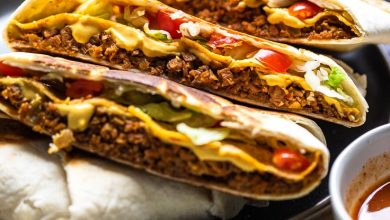The Small Changes That Can Help You Drop 30 Pounds

blackCAT/iStock/GettyImages
No matter where you start, weight loss is a challenging process that takes diligence, patience and some self-affirmation. But know this: While losing 30 pounds in five months may require changes to your diet and exercise, it’s a totally attainable goal.
As you embark on your weight-loss journey, keep in mind that everybody responds differently to changes in lifestyle. So don’t feel discouraged if the results don’t show as quickly as you’d like, and remember to keep your long-term goals in focus.
Video of the Day
Video of the Day
Ready to get started? Here’s your roadmap to dropping 30 pounds — and keeping it off.
Safely Cut Back on Calories
Creating a sustainable calorie deficit is the first step in any weight-loss plan. This involves strategically cutting calories from your daily intake so that you burn more than you consume. How much you should cut will vary by person and weight-loss goal, but slashing anywhere between 500 to 1,000 calories per day is generally a safe practice, according to the Mayo Clinic.
If you’re looking to lose 30 pounds in five months, you’ll need to lose about two pounds per week, which is a sustainable rate of weight loss, according to the Centers for Disease Control and Prevention (CDC). Because there is 3,500 calories in a pound of fat, you will have to cut about 1,000 calories from your daily intake.
(Keep in mind, there is no guarantee that you will lose two pounds per week with this deficit — this is just a guideline. Weight loss will also depend on your overall health, genetics, metabolism and level of physical activity.)
Clean Up Your Diet
Although weight loss revolves around your caloric burn and consumption, you still want to consider the quality of your meals in addition to the quantity. Eliminate as many processed foods as possible — things like packaged snack foods and processed meats like bacon and sausage — as they are usually high in calories but low in nutrients, according to the Academy of Nutrition and Dietetics (AND). Start by limiting your processed foods to only 200 calories per day, and see if you can improve from there.
As you curtail your processed foods, increase the nutrient-dense foods on your plate. Whole grains and leafy greens are typically low in calories but high in fiber, a nutrient that your body is slow to digest and thus keeps you feeling full, according to the AND. Lean protein sources like poultry, lean beef or nonfat dairy are other nutrient-dense options that will help you stay full longer.
While it’s important to fill your plate with nutritious choices, the way you eat is just as important as the contents of your meals when it comes to weight loss. There are several practices that commonly lead to weight gain, such as skipping meals, eating too quickly or noshing while watching television, according to the CDC.
Increase Your Daily Activity
Upping your physical activity will also help you burn more calories throughout the day and is part of creating a sustainable deficit, according to the CDC.
Warning
If you’re new to exercise, slowly ease into a gym routine to prevent injury.
Create a weekly cardio- and strength-training routine for a well-rounded exercise regimen. Aim to get in about 150 minutes of moderate-intensity exercise or 75 minutes of vigorous-intensity exercise each week, recommends the CDC. You should also aim to include at least two days of muscle strengthening activities, like lifting weights or bodyweight exercises.
While this may seem like a lot, you can meet this mark by making small changes to your routine, such as taking the stairs instead of the elevator or biking to the grocery store instead of driving.
Vigorous activity can involve jogging or running, swimming or playing competitive sports — in other words, exercise that goes beyond everyday movement.
Nutritious Eating Hacks to Try
Changing calories and losing weight is not any easy process for anyone. But there are some hacks and tricks that may make your experience easier, according to the CDC.
- Keep a journal that notes your daily diet wins and areas for improvement.
- Create a list of foods that may trigger unhealthy eating and make a plan to avoid them.
- Eat more slowly and drink plenty of water with each meal.
- Plan your meals ahead of time, including nutritious snacks.




